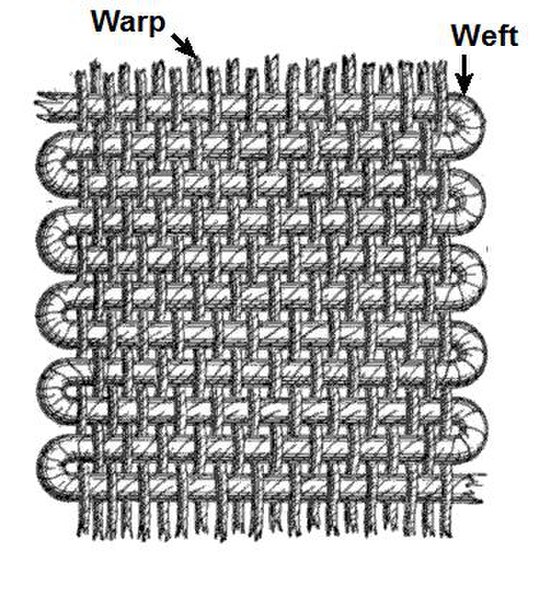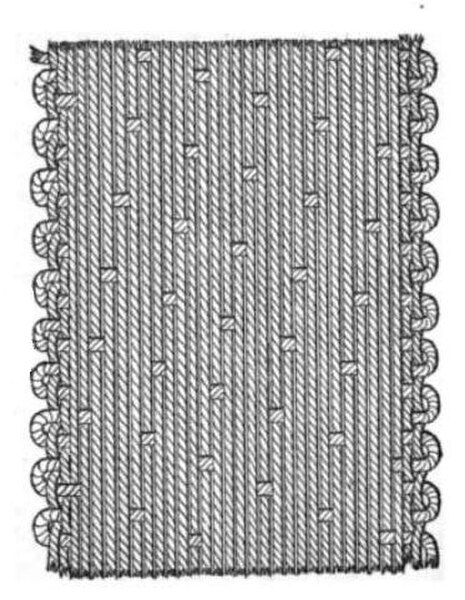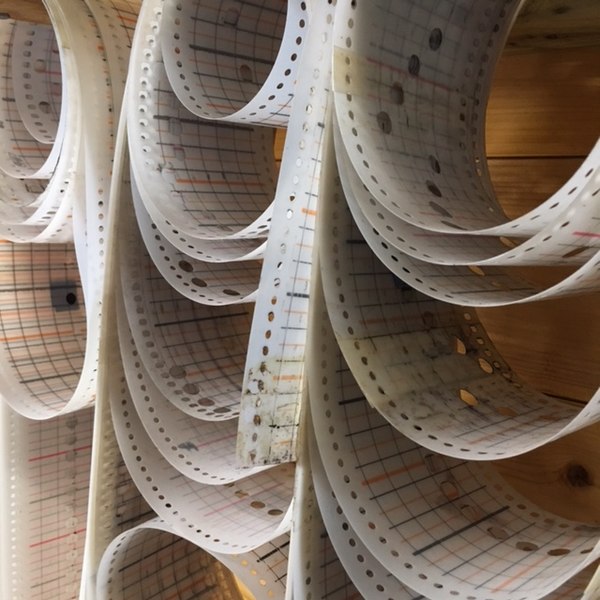A loom is a device used to weave cloth and tapestry. The basic purpose of any loom is to hold the warp threads under tension to facilitate the interweaving of the weft threads. The precise shape of the loom and its mechanics may vary, but the basic function is the same.
A treadle-driven Hattersley & Sons Domestic Loom, built under licence in 1893, in Keighley, Yorkshire. This loom has a flying shuttle and automatically rolls up the woven cloth; it is not just controlled but powered by the pedals.
A woman in Konya, Turkey, works at a vertical loom
A simple handheld frame loom
A Turkish carpet loom showing warp threads wrapped around the warp beam, above, and the fell being wrapped onto the cloth beam below.
Weaving is a method of textile production in which two distinct sets of yarns or threads are interlaced at right angles to form a fabric or cloth. Other methods are knitting, crocheting, felting, and braiding or plaiting. The longitudinal threads are called the warp and the lateral threads are the weft, woof, or filling. The method in which these threads are interwoven affects the characteristics of the cloth.
Cloth is usually woven on a loom, a device that holds the warp threads in place while filling threads are woven through them. A fabric band that meets this definition of cloth can also be made using other methods, including tablet weaving, back strap loom, or other techniques that can be done without looms.
Warp and weft in plain weaving
A satin weave, common for silk, in which each warp thread floats over 16 weft threads
A Bangladesh Ansar officer weaving on duty.
Weaving pattern cards used by Skye Weavers, Isle of Skye, Scotland








